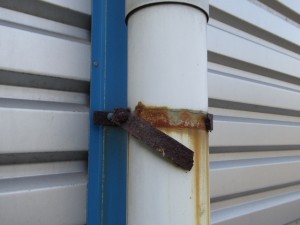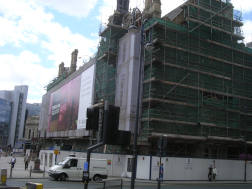
A party wall is a wall or boundary that is shared by multiple owners or tenants. Ownership is a complex matter that may require chartered building consultancy to resolve – is the party wall jointly owned, partly owned or owned by one of the parties exclusively?
The UK Party Wall etc. Act 1996 aims to prevent, reduce and resolve disputes surrounding party walls and must be considered in addition to standard planning permission processes, where appropriate. It’s essential to consider the legislation surrounding party walls if you want to adapt, improve or replace existing structures – otherwise you could end up facing tedious (and costly) legal proceedings. Here’s what you need to know if you’re planning on altering a party wall in future.
It’s important to understand that – as the name suggests – multiple parties may claim joint ownership of party walls. Previously, due to a lack of detailed legislation regarding the disputes surrounding party walls, even the smallest of renovations could have resulted in significant legal battles. The Party Wall etc. Act 1996 essentially introduced a standardised, simplified system to deal with such boundary disputes.
Step 1 – Does my project fall under the terms of the Act?
If you wish to carry out building work that involves altering an existing party structure, building a new boundary wall, or excavating near a neighbouring building (within 3-6 m), then the Act requires that you notify any neighbours who may share the boundary with you.
Examples of common types of building work that fall under the above categories include raising the height of the party wall (to build additional storeys), to rebuild a structurally defective party structure, or to simply repair it. Extremely minor work on party walls, including adding sockets or plaster, doesn’t usually require a notice under the UK Party Wall etc. Act.
Step 2 – Obtaining permission
If you obtain written permission from the adjoining owner to proceed with the work, even after agreeing an amendment to the plan, you may continue development as normal. It’s important to note again that even when an agreement with your neighbours is reached, planning permission and compliance with building regulations are both still required for any development to go ahead. If you are not able to obtain written consent within 14 days, you must solve the dispute using the framework outlined in the Act.
Step 3 – What if we can’t reach an agreement?
If you are unable to reach an agreement with the adjoining owners, the next step is to work with them to appoint an ‘agreed surveyor.’ Alternatively, both parties could appoint surveyors who would then, in turn, agree on a third surveyor. The appointment surveyor’s task is to resolve the dispute as fairly as possible. Anyone who is not a party to the dispute can be appointed as surveyor.
Step 4 – After the surveyor’s decision
The surveyor’s decision is final and binding unless it is rescinded upon appeal by the court. However, this stage can be costly, should your appeal fail. For further details on each stage of the process, the Department for Communities and Local Government has put together a full explanatory booklet on the Act that should help to answer any remaining questions.
Bradley-Mason LLP is on hand to help resolve any party wall or boundary disputes you may have in future, and to assist with development once those disputes have been rectified. Contact us today and we’ll help you understand the steps you can take next, offering expert advice for both building owners and adjoining tenants.
DISCLAIMER: This article is for general information only and not intended as advice. Each project has its own set of unique circumstances, all potential issues should be investigated by a surveyor on a case by case basis before making any decision.




 As an independent chartered surveyor, Bradley-Mason LLP combines effective, professional advice with a personalised service in building consultancy and project management in order to ensure that any new company project or commercial expansion runs smoothly and without issue. We offer a range of services to clients throughout the UK, proud to be recognised as registered RICS surveyors and we tailor each service to meet the needs of our clients, ensuring complete satisfaction.
As an independent chartered surveyor, Bradley-Mason LLP combines effective, professional advice with a personalised service in building consultancy and project management in order to ensure that any new company project or commercial expansion runs smoothly and without issue. We offer a range of services to clients throughout the UK, proud to be recognised as registered RICS surveyors and we tailor each service to meet the needs of our clients, ensuring complete satisfaction. Our project management service is designed to ensure that everything runs smoothly when embarking on a commercial expansion or starting a new building project. Our retail consultants and expert project managers will make sure that the project remains in keeping with the time and budget constraints, maintaining a high quality of service.
Our project management service is designed to ensure that everything runs smoothly when embarking on a commercial expansion or starting a new building project. Our retail consultants and expert project managers will make sure that the project remains in keeping with the time and budget constraints, maintaining a high quality of service.